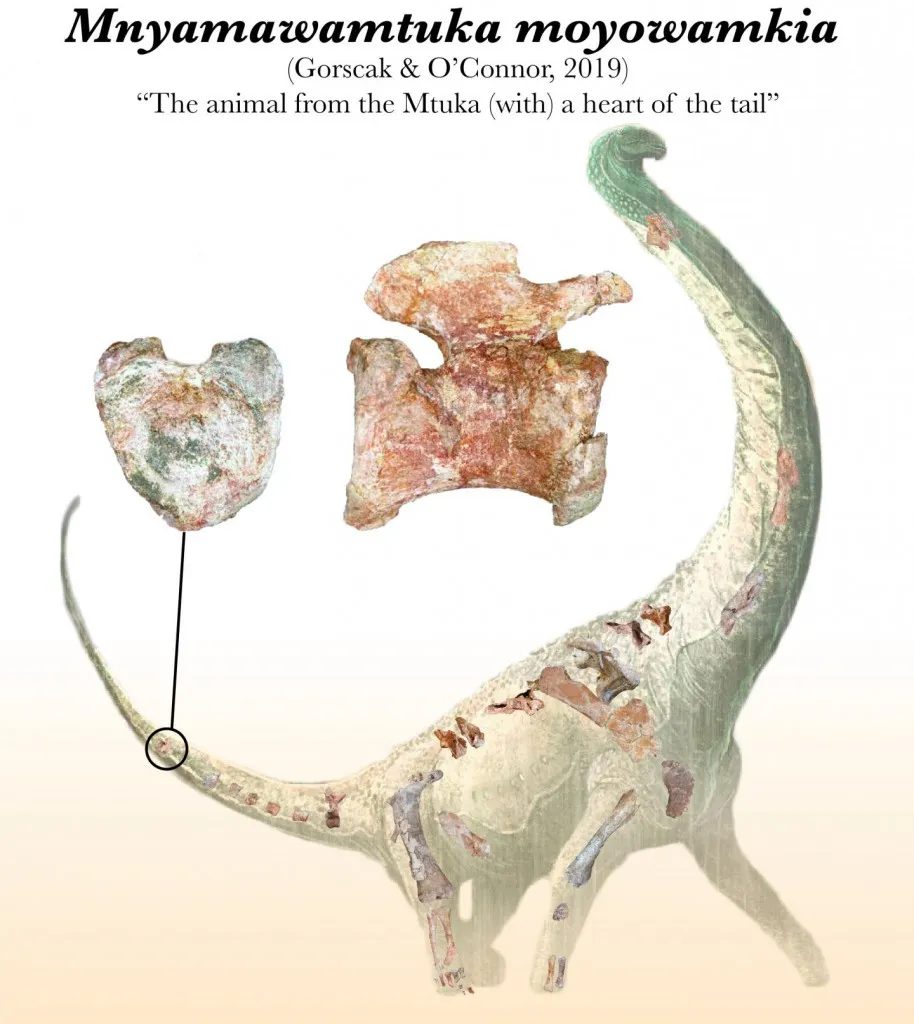Meet the Dinosaur With the Heart-Shaped Tail Bone
The newly discovered long-neck dino could help scientists figure out why some dinosaurs grew to be so large
/https://tf-cmsv2-smithsonianmag-media.s3.amazonaws.com/filer/53/a4/53a45ae1-c9ca-4fb2-a6f8-e4c7d65857fc/192349.jpg)
Keenly targeting those readers feeling sick of couple-centric articles but still longing to indulge in the sweetness of Valentine's day, researchers announced this week the discovery of a new dinosaur with tailbones shaped like hearts.
The long-necked Mnyamawamtuka moyowamkia—Swahili for "animal of the Mtuka with a heart-shaped tail"—was found in the Mtuka, a riverbed in Tanzania, reports Jessica Boddy for Popular Science.
The dino is more than just an interesting name. M. moyowamkia is a member of the appropriately-named titanosaurs, a group of enormous animals. The researchers hope that figuring out how the new find relates to fossils scientists have already uncovered can reveal more about titanosaurs, how they lived and how they thrived.
“Titanosaurs dominated Cretaceous ecosystems all over the world at the end of the age of dinosaurs,” Kristina Curry Rogers, a paleontologist at Macalester College in St. Paul, Minnesota, tells Popular Science. Rogers wasn't involved in the new study. “In spite of the fact that titanosaurs are being discovered at an astonishing pace and inhabited every continent on earth, the earliest phases of their take over are still pretty mysterious.”

Titanosaurs first appeared about 125 million years ago, reports Will Dunham for Reuters. Before dinosaurs were wiped out 66 million years ago, the largest of the titanosaurs could grow to be 120 feet long and weigh 70 tons. The new fossil find "provides a critical look at the group before the widespread diversification around the planet,” Patrick O'Connor, a study co-author and anatomy professor at Ohio University tells Reuters.
Scientists still aren't sure how or why the titanosaur group grew so large. Most specimens have come from South America, writes Gemma Tarlach for Discover. So a find in Africa is exciting and has the potential to round out the titanosaur story.
The researchers dug M. moyowamkia out of a cliff face above a dry river bed. Excavations started in 2004. They found teeth, parts of limbs, ribs, vertebrate and parts of the shoulders and pelvis, they report in PLOS One. The paper includes a detailed description of all the bones the team found as well as how they compare to other titanosaur fossils.
As for the heart-shaped tail bone, O'Connor says that the vertebrae could have helped to stiffen the long tail. "It was not fully grown yet, as evidenced by unfused parts of the skeleton," he tells Reuters. "So, we are not sure of the maximum adult size at this point." Whatever it's purpose in life, the unique anatomical feature is certainly helping the dino gain fame long after it died.